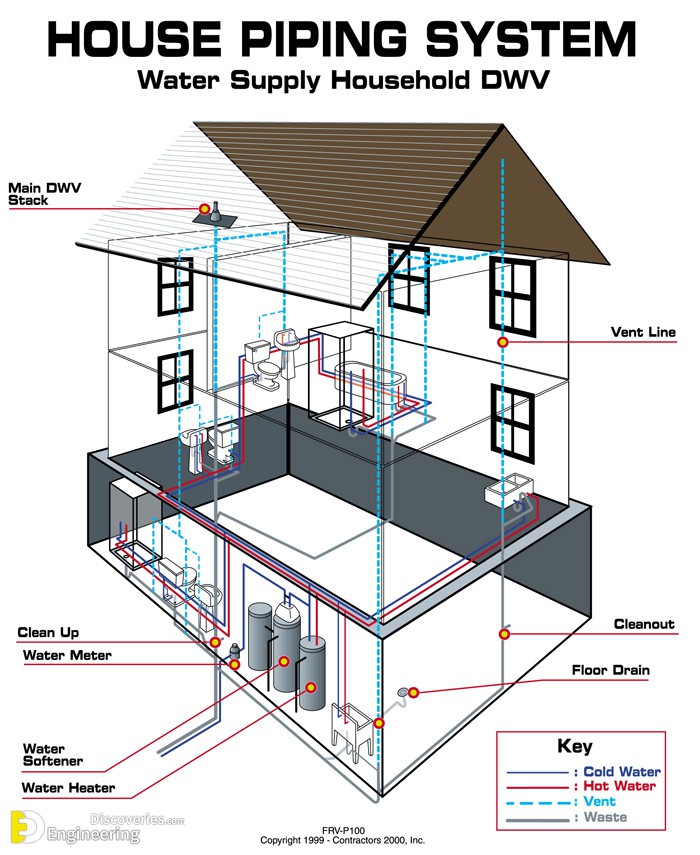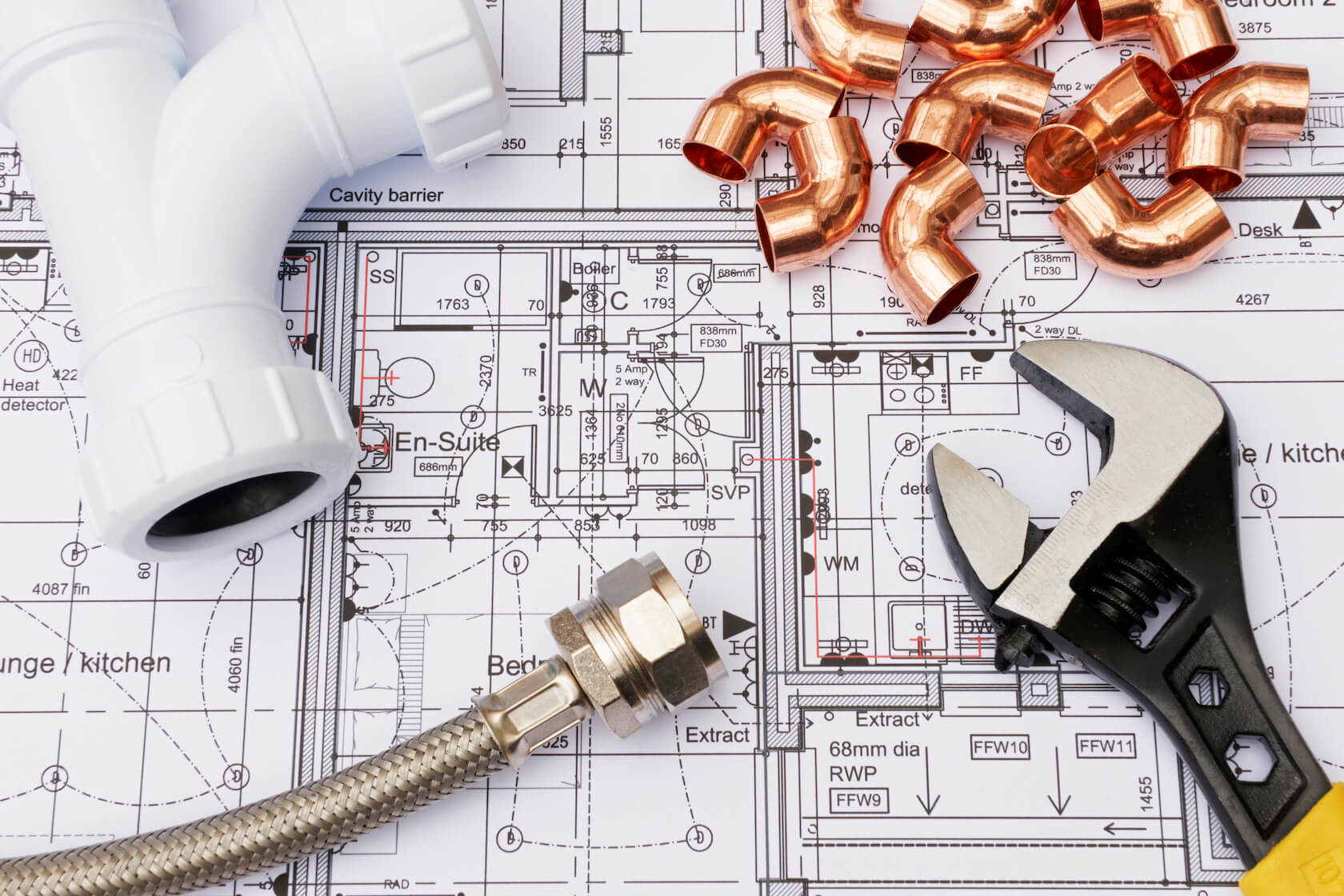Are you currently in search of suggestions involving The Inner Workings of Your Home's Plumbing?

Recognizing how your home's pipes system works is vital for each homeowner. From providing tidy water for drinking, food preparation, and bathing to securely removing wastewater, a well-kept pipes system is essential for your household's health and convenience. In this comprehensive guide, we'll discover the detailed network that makes up your home's plumbing and offer suggestions on maintenance, upgrades, and taking care of common concerns.
Introduction
Your home's pipes system is more than just a network of pipelines; it's a complicated system that guarantees you have access to clean water and reliable wastewater removal. Understanding its components and exactly how they collaborate can aid you prevent expensive repair work and make sure every little thing runs efficiently.
Basic Parts of a Pipes System
Pipes and Tubing
At the heart of your pipes system are the pipelines and tubing that bring water throughout your home. These can be made from numerous products such as copper, PVC, or PEX, each with its advantages in terms of longevity and cost-effectiveness.
Components: Sinks, Toilets, Showers, etc.
Fixtures like sinks, bathrooms, showers, and tubs are where water is utilized in your house. Comprehending exactly how these fixtures link to the plumbing system assists in identifying issues and preparing upgrades.
Valves and Shut-off Points
Valves control the flow of water in your pipes system. Shut-off shutoffs are critical throughout emergency situations or when you require to make repair services, enabling you to isolate parts of the system without disrupting water circulation to the whole residence.
Water System
Main Water Line
The major water line attaches your home to the metropolitan water or an exclusive well. It's where water enters your home and is dispersed to different fixtures.
Water Meter and Pressure Regulator
The water meter actions your water usage, while a pressure regulator makes certain that water moves at a risk-free pressure throughout your home's plumbing system, stopping damages to pipes and fixtures.
Cold Water vs. Warm water Lines
Comprehending the distinction in between cold water lines, which supply water straight from the major, and hot water lines, which carry warmed water from the hot water heater, assists in troubleshooting and planning for upgrades.
Water drainage System
Drain Pipes and Traps
Drain pipes carry wastewater far from sinks, showers, and bathrooms to the sewer or septic tank. Catches prevent sewage system gases from entering your home and likewise trap particles that might cause obstructions.
Air flow Pipes
Air flow pipelines allow air right into the drain system, protecting against suction that might slow drainage and create catches to vacant. Proper ventilation is essential for keeping the honesty of your plumbing system.
Significance of Proper Water Drainage
Making certain proper water drainage stops backups and water damages. Consistently cleaning drains pipes and keeping traps can prevent pricey fixings and extend the life of your pipes system.
Water Furnace
Types of Water Heaters
Water heaters can be tankless or traditional tank-style. Tankless heating systems heat water as needed, while storage tanks store warmed water for instant use.
Updating Your Pipes System
Reasons for Upgrading
Upgrading to water-efficient fixtures or changing old pipelines can enhance water top quality, minimize water costs, and boost the worth of your home.
Modern Pipes Technologies and Their Advantages
Explore technologies like clever leak detectors, water-saving commodes, and energy-efficient hot water heater that can save money and decrease ecological impact.
Cost Factors To Consider and ROI
Compute the ahead of time prices versus long-lasting savings when considering pipes upgrades. Many upgrades spend for themselves via lowered utility bills and less repair services.
Exactly How Water Heaters Connect to the Plumbing System
Recognizing exactly how water heaters connect to both the cold water supply and hot water circulation lines assists in identifying concerns like insufficient warm water or leakages.
Upkeep Tips for Water Heaters
Routinely flushing your hot water heater to get rid of sediment, checking the temperature level setups, and checking for leakages can prolong its life expectancy and improve power effectiveness.
Usual Plumbing Concerns
Leakages and Their Reasons
Leakages can take place due to maturing pipelines, loose installations, or high water stress. Attending to leaks promptly stops water damages and mold and mildew growth.
Clogs and Blockages
Clogs in drains and bathrooms are commonly brought on by purging non-flushable things or a buildup of grease and hair. Utilizing drain displays and being mindful of what decreases your drains pipes can protect against obstructions.
Indications of Pipes Issues to Expect
Low tide stress, slow-moving drains, foul odors, or unusually high water bills are indicators of prospective plumbing problems that should be attended to immediately.
Plumbing Maintenance Tips
Normal Evaluations and Checks
Arrange annual pipes assessments to capture problems early. Look for indications of leaks, corrosion, or mineral buildup in taps and showerheads.
Do It Yourself Upkeep Tasks
Straightforward tasks like cleaning tap aerators, looking for bathroom leakages utilizing color tablets, or insulating subjected pipelines in chilly climates can stop major pipes issues.
When to Call a Specialist Plumbing Technician
Know when a pipes problem needs professional experience. Attempting complex fixings without proper expertise can result in even more damages and higher fixing expenses.
Tips for Lowering Water Usage
Simple routines like dealing with leaks immediately, taking shorter showers, and running complete loads of washing and dishes can save water and lower your utility costs.
Eco-Friendly Plumbing Options
Take into consideration sustainable plumbing products like bamboo for floor covering, which is durable and environment-friendly, or recycled glass for kitchen counters.
Emergency Readiness
Actions to Take During a Pipes Emergency
Know where your shut-off shutoffs lie and how to turn off the water system in case of a ruptured pipe or major leak.
Value of Having Emergency Get In Touches With Helpful
Keep get in touch with information for regional plumbing technicians or emergency situation services conveniently available for fast reaction during a plumbing crisis.
Ecological Influence and Conservation
Water-Saving Fixtures and Home Appliances
Setting up low-flow taps, showerheads, and commodes can significantly minimize water usage without giving up efficiency.
DIY Emergency Situation Fixes (When Applicable).
Short-term fixes like using duct tape to patch a dripping pipe or putting a pail under a trickling faucet can minimize damage up until an expert plumber arrives.
Conclusion.
Comprehending the anatomy of your home's plumbing system empowers you to preserve it successfully, saving time and money on fixings. By following normal upkeep regimens and remaining educated concerning modern plumbing technologies, you can ensure your plumbing system runs successfully for several years ahead.
HOW YOUR PLUMBING SYSTEM WORKS
Which Pipes Do What?
- Blue lines = fresh water supply entering the building
- Red lines = hot water supply entering the building
- Grey lines = pipes carrying waste away from the building and venting pipes carrying gases away from the building (through the roof)
YOUR MAIN PLUMBING SYSTEMS
There are two main plumbing systems that support your home s basic plumbing needs one that brings clean water into your home, and one that sends dirty water away from your home. Connected to the toilet, bath, shower, and other faucets in your home, these two systems keep your water flowing in the right directions.
ACCESSING FRESH WATER
Fresh and clean water is brought into your home through the main water supply line . Filtered through one pipe, this water is pressured to flow into the various fixtures in your home at any given time.
This water can be sourced from a well located on your property, a pond or river (mostly cottages), or, as in most cases, from the city s municipal water treatment centre. However, it is important to note that water that is untreated, such as the water siphoned from ponds or rivers, may not be safe to drink. Personal water supplies always need to be treated for hardness and contaminants before consumed.
MUNICIPAL WATER SUPPLIES
- Improve taste and odour
- Remove sediment
- Eliminate hardness
- Reduce chlorine
COLD WATER SUPPLY VS. HOT WATER SUPPLY
Cold water flows into your home or building through the service line, which then distributes hot or cold water to your fixtures. This line is most commonly run through a central column that runs floor to floor. Hot water runs in short and straight pipes as the longer the pipeline, the more heat that will be lost in the transfer. Having shorter pipes also allows residents to access hot water more quickly.
WASTE WATER SYSTEM
Your wastewater system is divided into two parts pipes that send wastewater away from your home and venting pipes that send sewer gas away from your home. Sewage water travels through pipes that flush the water and waste towards local sewers that are operated and managed by your city or town. Most sewer systems rely on gravity to move the wastewater to where it needs to go.
The further away from your toilet or sink, the larger wastewater pipes become. This allows for waste to be disposed of from various parts of your home or business at once without pipe blockages. The angle and flow of these pipes are also essential for keeping your waste pipes clear of build up.
https://harrisplumbing.ca/how-your-home-plumbing-system-works/

We had been made aware of that editorial about Exploring Your Homes Plumbing Anatomy through a friend on our other web property. Loved our blog posting? Please share it. Let somebody else discover it. Thanks so much for going through it.
Click On This Link
Comments on “Why Your Property's Plumbing System Works: Structure”